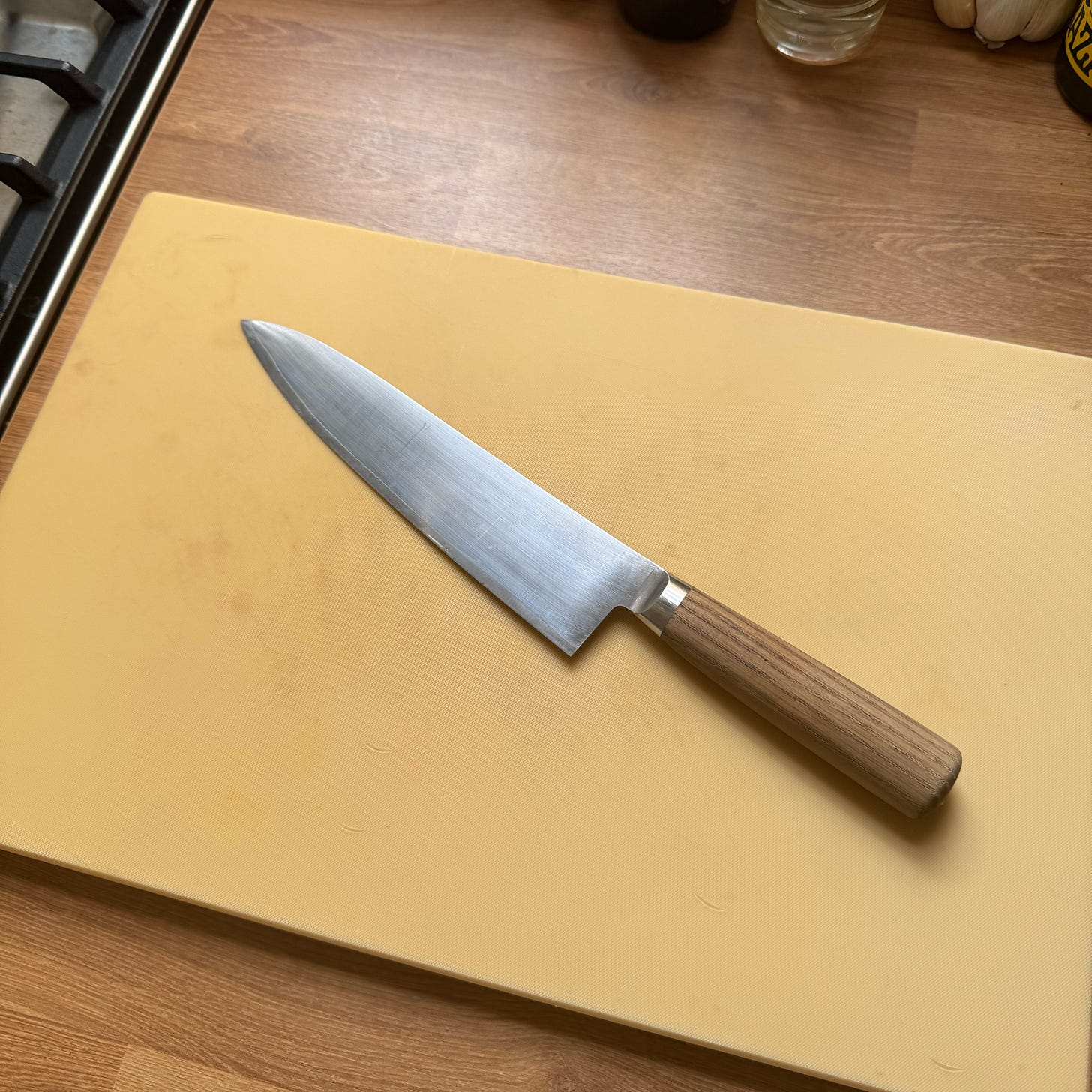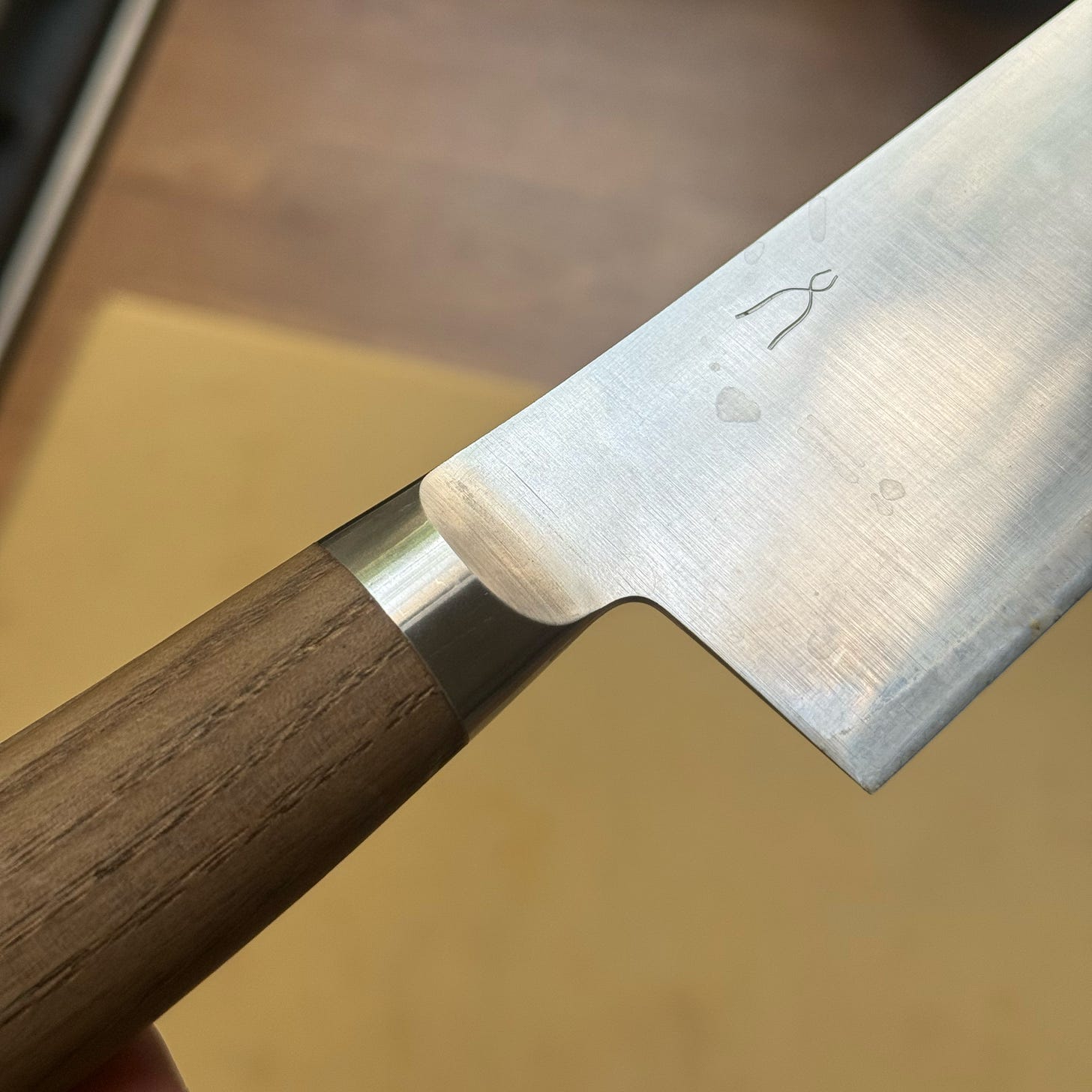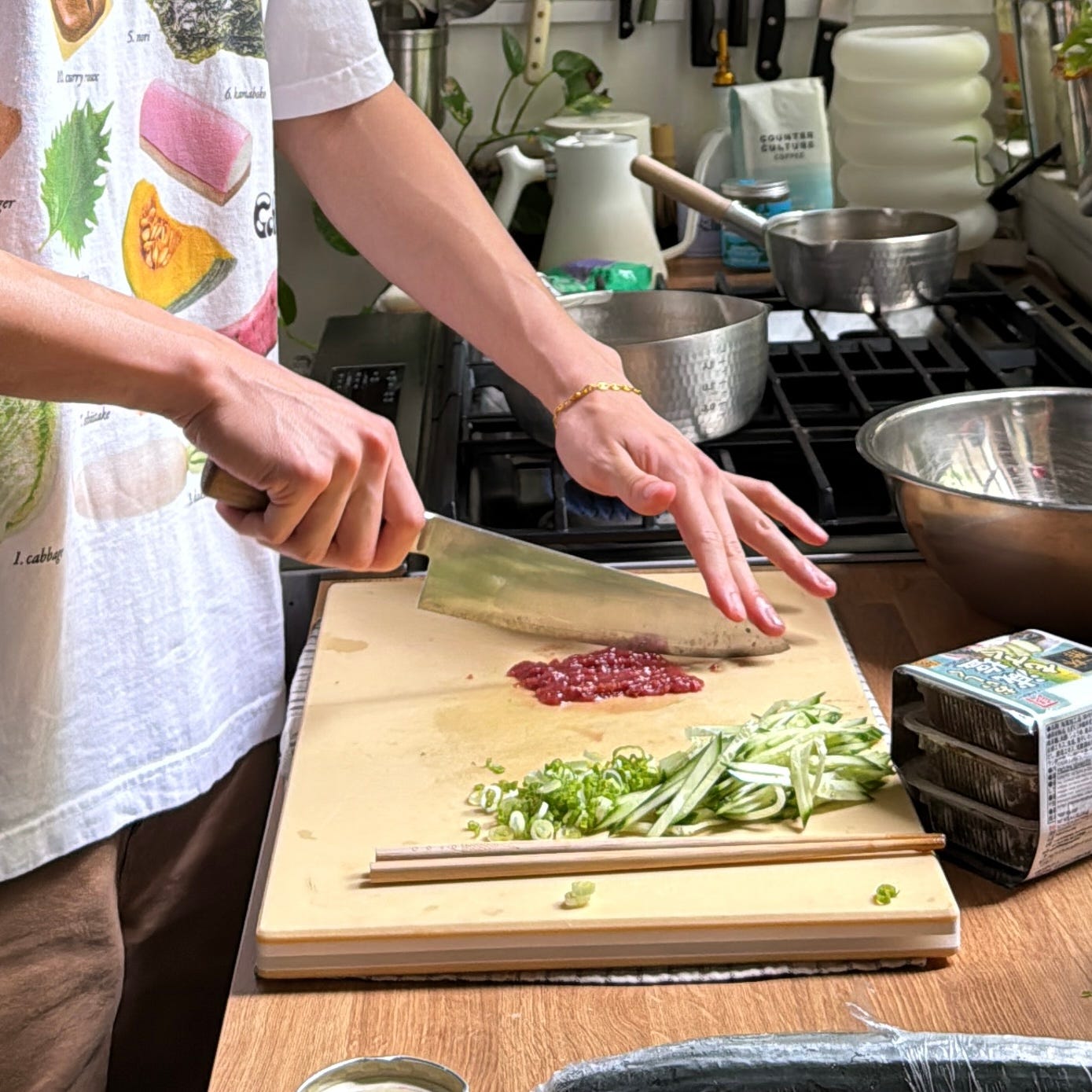One of the first pieces of equipment we really invested in was our chef’s knife: the Tadafusa Hocho Kobo Gyuto 210mm. A knife is the one tool the majority of us will consistently use every single time we cook, so it make’s sense to find a good one!
I can’t remember how exactly I came across this particular knife, but it was probably either through Instagram or good ol’ fashioned Googling. I knew I wanted knife with a western-style handle, where the handle and blade more seamlessly integrate vs the more abrupt joint of Japanese-style knives. So when I came across the Tadafusa, I was pleasantly surprised to find that it’s actually a Japanese-made knife with a Western design.
Tadafusa knives come from Sanjo City in Niigata, Japan — a place known for its blacksmithing history. Their "Hocho Kobo" series translates to "knife workshop," and blends traditional techniques with modern design. The Gyuto (meaning ‘cow sword’) is Japan's take on a Western chef's knife and if great for everything from slicing meat to dicing veggies, mincing garlic, and more.
The Tadafusa’s blade is typically made from Aogami Super (Blue Super) steel, a super high-carbon steel known for getting incredibly sharp and staying sharp. This core is then sandwiched between layers of softer stainless steel using a technique called "san-mai”, so that the outer layers protect the carbon steel core from rust and make the knife easier to sharpen if it ever chips. The wavy line seen on the blade edge is called the "hamon," a beautiful sign of this layered construction.
Now back to the handle, which is probably our favorite part about this knife and what stood out to us most. While many traditional Japanese knives have those distinct octagonal handles, the Hocho Kobo series features a more sleek and modern Western-style handle designed to fit your hand perfectly. It’s made from burned chestnut wood, which is tough and great at dealing with moisture. The combination of the wood with the geometry of the handle make it truly special and unlike most knives we see out there. You’ll also notice that there are no rivets! Which is uncommon with a Western handle and makes it less “knife-looking” in the best way.
In use, the Tadafusa is everything we could have asked for. It’s super sharp, comfortable to hold, and looks beautiful in-person and on camera. Maintenance is minimal, too. When we’re done using it, we simply wash it with a soft sponge, some detergent and warm water and wipe it dry. We’ve had ours for about four years now and have had it professionally sharpened just once (and we cook a lot). With consistent care, it’s not hard to imagine passing this knife down to future generations.
We purchased ours at Knifewear.com years ago when it was $123 USD. Costs have understandably gone up since then, so it’s now sitting at $148 USD. For something we use almost every day, I still wouldn’t hesitate to grab one at the new price.







